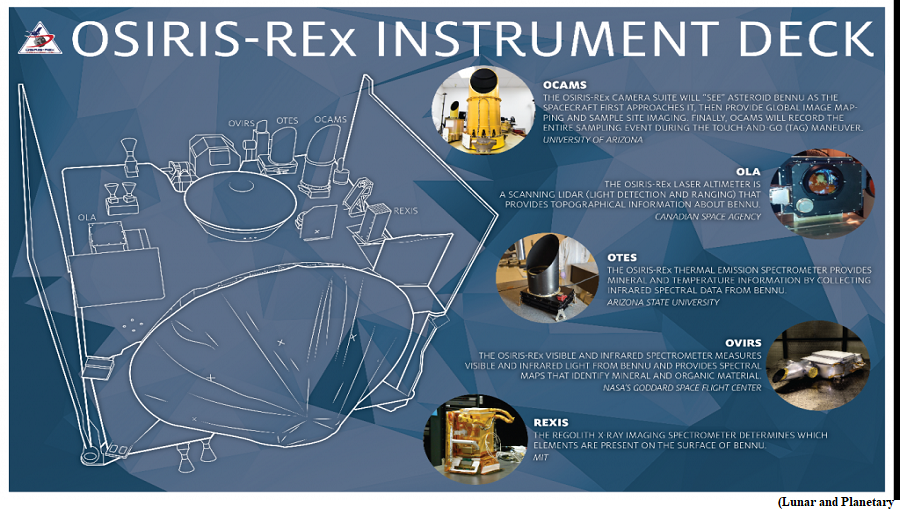Inside the digital world of cookies (GS paper 3, Science and Technology)

Why in news?
- The digital world of cookies plays a significant role in any online experience. In the digital realm, cookies help in personalisation and user convenience.
- These unassuming bits of code, stored on a device when one visits websites, play a pivotal role in shaping any online experience.
How do cookies work?
- On websites like Amazon, cookies remember customer’s previous interactions; from products they have browsed to purchases they have made.
- Armed with this knowledge, Amazon serves up tailored product recommendations and content, making the online shopping feel like a personalised boutique experience.
- Platforms like Facebook and Google use cookies to track online behaviour, ensuring the ads you encounter align with your preferences.
- While cookies offer undeniable advantages, there is a flip side to considering privacy concerns and the potential for data misuse.
What are the types of cookies?
- Session cookies are temporary cookies like post-it notes for websites. They are stored in the computer’s memory only during the browsing session. Once you close the browser, they vanish. Session cookies help websites remember the actions as you navigate, like items in a shopping cart.
- Persistent cookies are the digital equivalent of bookmarks. They stay on the device after your browsing session ends. Persistent cookies remember the login information, language preferences, and even the ads you have interacted with.
- Secure cookies are only sent over encrypted connections, making them safer from prying eyes. Secure cookies are often used for sensitive data like login credentials.
- Third-party cookies are similar—they come from a domain other than the one you are visiting. They are often used for tracking and advertising purposes, which can be both useful and, at times, intrusive.
What are the uses of cookies?
- They act as digital ID cards, aiding in user authentication by allowing websites to recognise and keep you logged in during the visit.
- They foster a sense of personalisation, recalling your preferences such as language choice or website theme. They function as the digital equivalent of a persistent shopping cart, ensuring that items you have added online remain there when you return.
- Additionally, cookies facilitate website owners in gathering invaluable analytics data about user interactions, enabling them to make enhancements and customise content.
- Finally, cookies play a pivotal role in targeted advertising, as advertisers use them to display ads that align with a person’s interest and browsing history, making online shopping more enticing.
What are the challenges associated?
- Firstly, privacy concerns arise as cookies could track your online behaviour, which, while often harmless, can sometimes encroach upon your digital privacy.
- Secondly, security risks loom when cookies are inadequately secured, opening doors for cybercriminals to pilfer the personal information.
- Thirdly, the era of user consent has dawned, thanks to privacy regulations like the General Data Protection Regulation and The California Consumer Privacy Act, necessitating websites to seek your approval before deploying certain cookie types, resulting in those somewhat irksome pop-ups and prompts.
- India’s newly enacted Digital Personal Data Protection Act 2023 now necessitates websites to acquire explicit consent from users prior to collecting or processing their personal data via cookies. In contrast to earlier regulations that often accepted implied consent as satisfactory, the updated law highlights the significance of transparent and well-informed consent.
- Fourthly, third-party cookies have sparked debates, prompting many web browsers to curb their usage to safeguard user privacy.
- Lastly, the data deluge generated by the multitude of cookies can potentially clog the browser, leading to a sluggish web experience.
What is the Five Eyes intelligence alliance
(GS paper 2, International Relation)
Why in news?
- The recent allegations by Canadian Prime Minister linking the killing of Khalistani leader Hardeep Singh Nijjar on Canadian soil to the Indian government have put the spotlight on the intelligence-sharing alliance ‘Five Eyes’, which is believed to have provided the information that “helped” Canada.

Who are the ‘Five Eyes’?
- The ‘Five Eyes’ is a multilateral intelligence-sharing network of five countries, Australia, Canada, New Zealand, the U.K. and the U.S. It is both surveillance-based and tracks signals intelligence (SIGINT).
- Intelligence documents shared between the member countries are classified ‘Secret—AUS/CAN/NZ/UK/US Eyes Only,’ which gave the group its title ‘Five Eyes.’
- The alliance between the U.S. and the U.K. evolved around the Second World War to counter the Cold War Soviet threat.
- The two countries, which had successfully deciphered German and Japanese codes during the war, forged a collaboration to share intelligence related to signals such as radio, satellite and internet communications.
Establishment:
- In 1946, the alliance was formalised through an agreement for cooperation in signals intelligence.
- The treaty called the British-U.S. Communication Intelligence Agreement, or BRUSA (now known as the UKUSA Agreement), was signed between the State-Army-Navy Communication Intelligence Board (STANCIB) of the U.S. and the London Signal Intelligence Board (SIGINT) of Britain.
- Its scope was limited to “communication intelligence matters only” related to the “unrestricted” exchange of intelligence products in six areas:
- a collection of traffic;
- acquisition of communication documents and equipment;
- traffic analysis;
- cryptanalysis;
- decryption and translation; and
- acquisition of information regarding communication organisations, practices, procedures, and equipment.
- The arrangement was later extended to ‘second party’ countries —Canada joined in 1948, while Australia and New Zealand became part of the alliance in 1956.
- Though the intelligence alliance came together in the 1940s, it remained a top secret for long. The then Australian PM Gough Whitlam did not know about the existence of BRUSA, regarded as one of the most secret agreements, until 1973.
- In fact the text of the agreement was first officially released in public after over 60 years in 2010.
How does the network work?
Initially, the partners are assigned respective SIGINT mandates.
- The U.S. is responsible for Russia, northern China, most of Asia and Latin America;
- Australia covers southern China, Indo-China and its close neighbours, such as Indonesia;
- the U.K. is in charge in Africa and west of the Urals within the former Soviet Union; and
- New Zealand is responsible for the Western Pacific, while Canada handles the polar regions of Russia.
- The goalpost of the Five Eyes, however, has shifted following the collapse of the Soviet Union and the emergence of new global challenges like terrorism and the growing influence of China.
- The Five Eyes have become involved in ocean and maritime surveillance, scientific and defence intelligence analysis, medical intelligence, geospatial intelligence, counterintelligence, counterterrorism, and the continuous sharing of intelligence products via a secret collective database known as ‘Stone Ghost’.
What are the concerns?
- There have been several concerns regarding the privacy, security and methods of working of the intelligence alliance, which remained shrouded in mystery for long.
- The alliance was embroiled in a major controversy in 2013 following the disclosure of classified documents by Edward Snowden, a former National Security Agency (NSA) contractor.
OSIRIS REx and Bennu, Sample return missions explained
(GS paper 3, Science and Technology)
Why in news?
- NASA’s OSIRIS-REx is a robotic spacecraft that has been on a seven-year mission to collect and return samples from an asteroid called Bennu.
- It took more than two years to reach Bennu after OSIRIS-REx launched in 2016.
- It then spent almost as much time mapping the asteroid, finding a site to scrape and collecting about 250 grams (8.8 ounces) of the rock. Then it began its journey back toward Earth.

How will the OSIRIS-REx samples return to Earth?
- At an altitude of about 250 kilometers (155 miles) from the surface of Earth, OSIRIS-REx will release a capsule carrying the samples over the Great Salt Lake Desert in Utah, US.
- Scientists have been training to recover the capsule and securely transfer the samples to NASA’s Johnson Space Center in Houston, Texas.
- Having released its capsule, it will travel on toward a new destination: Apophis, an asteroid once thought to pose a hazardous impact threat to Earth, but not anymore, at least not for the next 100 years.
What is a sample return mission?
- These days, sample return missions tend to be robotic. In the past humans were sent to collect rocks and soil from space, NASA’s Apollo missions did that between 1969 and 1972.
- Sample return missions send spacecraft to land on a celestial body and collect samples of soil, minerals and rock.
- The samples are analyzed in laboratories on Earth. But some get stored, too, a lot of the Apollo samples were left sealed and untouched because scientists and engineers figured technology would improve over time, allowing them to conduct different or better experiments in the future.
Why do scientists collect samples from space and what do we learn?
- Samples from space tell about life elsewhere in our solar system and early Earth history.
- The samples can include atoms, molecules and complex compounds, evidence of water, and particles of solar wind or cometary debris.
Who will analyze the samples from Bennu?
- NASA has said its samples from the asteroid Bennu “will give generations of scientists a window into the time when the sun and planets were forming about 4.5 billion years ago” and the beginnings of life as known today. Bennu is thought to be rich in carbon, a chemical that is essential to life.
- While NASA plans to keep 25% of the samples for its own research, it has said it will distribute the rest among 200 mission members at 35 institutions around the world.
- That includes 4% of the samples going to the Canadian Space Agency, because it provided an instrument for the OSIRIS-REx mission.
- And 0.5% of the samples will go to the Japanese space agency, the Japan Aerospace Exploration Agency (JAXA) as part of a partnership.
How often have samples been collected from asteroids?
- Aside from the Apollo era moon landings, during which NASA collected about 382 kilograms (842 pounds) of rock and moon soil, Soviet-era Russia conducted three successful robotic missions between 1969 and 1976 to procure about 326 grams of samples (11 ounces).
- More recently, JAXA’s Hayabusa mission from 2003 to 2010 was the first time humans had brought back samples from a near-Earth object: the asteroid Itokawa.
- Japan followed that with Hayabusa2, which returned samples from an asteroid called Ryugu in 2020.
- And, also in 2020, China’s Chang’e 5 mission returned samples from the moon.
Are any sample return missions planned for the future?
- Japan’s Martian Moons eXploration (MMX) aims to be the first sample return mission to bring back rocks from the Mars region.
- Scheduled to launch in 2024, MMX aims to investigate the moons of Mars, Phobos and Deimos, and gather information on how they formed.
- MMX also aims to collect samples from Phobos, the larger of the two moons, and then return to Earth in 2029.
- Meanwhile, the European Space Agency and NASA are engaged in a sample return mission from the surface of Mars, which will return to Earth in 2033.




